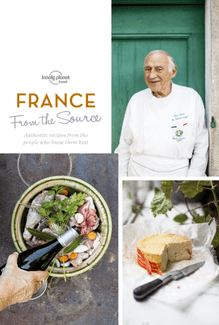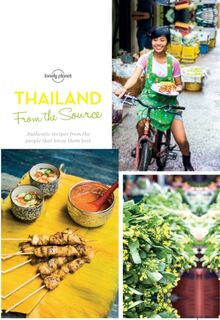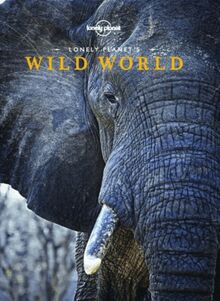Lonely Planet Lonely Planet's Best Ever Photography Tips , livre ebook
132
pages
English
Ebooks
2017
Vous pourrez modifier la taille du texte de cet ouvrage
Obtenez un accès à la bibliothèque pour le consulter en ligne En savoir plus
Découvre YouScribe en t'inscrivant gratuitement
Découvre YouScribe en t'inscrivant gratuitement
132
pages
English
Ebooks
2017
Vous pourrez modifier la taille du texte de cet ouvrage
Obtenez un accès à la bibliothèque pour le consulter en ligne En savoir plus
Publié par
Date de parution
01 août 2017
Nombre de lectures
1
EAN13
9781787010031
Langue
English
Poids de l'ouvrage
17 Mo
Publié par
Date de parution
01 août 2017
Nombre de lectures
1
EAN13
9781787010031
Langue
English
Poids de l'ouvrage
17 Mo
INTRODUCTION
THE 10 GOLDEN RULES
Take Control of the Picture-Taking Process
Learn to See the Transformative Power Of Light
Practise, Practise, Practise
Research & Plan
Develop a Picture-Taking Routine
Be Patient & Commit to the Image
Pay for Photos Only When It’s Appropriate
Shoot Raw Files
Become Proficient With Image-Editing Software
Critique Your Photos Objectively
THE 49 BEST TIPS
Choose the Correct Camera
Accessorise!
Use the Quality Control Settings
Select a Suitable File Format
Adjust Your Exposure
Capture the Widest Tonal Range
Check the Exposure is Correct
Stay Within Range of Your Flash
Reduce Red-Eye
Use Your Phone Like a Camera
Put Yourself in the Action
Prevent Blur
Highlight Your Subject
Follow the Rule of Thirds
Vary the Look of Your Images
Vary the Depth of Field
Reduce Reflections
Talk to Strangers
Use a Short Telephoto Lens
Use a Wide-Angle Lens
Show Landscapes Some Love
Shoot Early or Late
Use a Tripod
Override the Light Meter
Fill the Frame
Move Around
Light Your Lunch
Capture Cityscapes at Dusk
Gauge Light to Shoot Interiors
Use a Fast ISO
Get to the Parade Early
Visit Famous Places
Grab a Window Seat
Add a Sense of Scale
Anticipate the Moment
Capture Reflections
Make Sunsets More Interesting
Avoid Lens Flare
Look Beyond the Obvious
Shoot Wildlife
Set Your Alarm Clock
Be Patient
Get Creative with Wildlife
Record Light Trails
Shoot a Firework Display
Don’t Put Your Camera Away
Protect Your Camera
Back Up Your Images
Work With Your Images
GLOSSARY
ACKNOWLEDGEMENTS
GREAT PICTURES ARE the result of matching an interesting subject with the best light, a pleasing placement of the elements and exposing the sensor to just the right amount of light to translate the way you see the scene onto the camera’s sensor. It is how the photographer handles this combination of technical and creative skills at a particular moment in time that produces unique images and allows individuality to shine through.
THESE 59 TIPS offer a concise insight into the thinking, behaviours and the creative and technical skills required to produce vibrant and dynamic images across the wide range of subjects and situations you’re likely to encounter everywhere, from your own backyard to the other side of the world. Put them into practice and you’ll increase the percentage of good photographs you take and lift your photography to the next level of creativity and consistency.
Take control of the picture-taking process by learning the technical stuff so you can take your camera off the fully Automatic or Program settings. And get to know your gear so that the mechanics of taking a photograph become second nature.
Automatic features are brilliant if you know what they are doing and what impact they are having on the image – then you can decide if that is really how you want your photo to look. Particularly, understand the exposure triangle – ISO, shutter speed and aperture – so that the multiple options you have for setting a correct exposure become instinctive. This will allow you to use the settings as creative tools that control the mood, quality and feel of the photograph, rather than just as a technical necessity.
As for gear, the minimum aim should be to know how to change the ISO, shutter speed and aperture settings, turn the flash on and off, change lenses and filters and get your tripod up, camera mounted and shutter-release cable attached; all as quickly as possible.
With this combination of technical knowledge and practical skills you’ll then be able to concentrate on and enjoy the creative side of photography by seeking out interesting subjects and great light. You’ll also have a much better chance of capturing more images at exactly the right time, especially those fleeting moments and expressions that make unique photographs.
Palace of Westminster at dusk, London, England
The ability of light to transform a subject or scene from the ordinary to the extraordinary is one of the most powerful tools at the photographer’s disposal. To be able to ‘see’ light and to understand how it translates onto the sensor and how it impacts on your compositions is the final building block in creating striking images.
There’s light and there’s the ‘right light’. The keys to the right light are its colour, quality and direction. As your eye settles on a potential subject, note where the light is falling and select a viewpoint from where the light enhances your subject. There is an optimal time of day to photograph everything, so be prepared to wait or return at another time if you can’t find a viewpoint that works. However, most subjects are enhanced by the warm light created by the low angle of the sun in the one to two hours after sunrise and before sunset. At these times shadows are long and textures and shapes are accentuated. If you’re serious about creating good pictures, this is the time to be out and about shooting. Given all other things are equal, it’s the light in which a photographer shoots that sets images apart.
Stari Most, Mostar, Bosnia & Hercegovina
Once you’ve got the technical stuff sorted, can work efficiently with your gear and can see the light; practise. You can photograph most of the subjects you’ll encounter while travelling in any town or city in the world, including your own.
Planning and executing a shoot of your own city is a great way to practise your research skills, test your camera equipment, perfect your technique, develop your eye and get a feel for changing light. Buy a guidebook, check out the postcards and souvenir books, and draw up a shot list. Treat the exercise exactly as you would if you were away from home. You’ll quickly get an insight into just how much walking you can expect to do, how many locations and subjects you can expect to photograph in a day, and how manageable your equipment is.
You can then use this knowledge to plan your trips away from home a little more accurately to meet your goals. As a bonus, you’ll be rewarded with a fresh insight into your home town. You’re sure to see it in a different light and to discover subjects and places you didn’t know about.
Jampey Lhakhang festival, Jakar, Bhutan
Research and planning go a long way to getting you to the right place at the right time more often than not. The more time you have, the more opportunities you give yourself to photograph subjects in the best light. Photographers demand more time in a place than the average camera-toting tourist – sometimes just a few extra minutes can make all the difference. The sun may come out or go in, the right person may stop and stand in just the right place, the rubbish-collection truck parked in front of the city’s most beautiful building may move on, the people buying fruit may hand over their money. If you have days rather than minutes, you can look for new angles and viewpoints of well-known subjects, visit places at different times of the day, shoot in a variety of great light, and get better coverage.
Check out the dates of special events such as festivals, public holidays and weekly markets. The spectacle, colour and crowds that are the hallmarks of these special days provide so many great photo opportunities that it’s worth planning your trip around them.
For the most productive and enjoyable time, ensure you have an understanding of the size and layout of the city, or general area in the case of nature-based destinations, and the locations of the key sights and activities. Stay in the most central location you can (and book a room with a view). Accommodation may be cheaper on the edge of town but you’ll have to spend more money on taxis, walk further, get up earlier and carry around extra bits of gear (such as a tripod) when you don’t need them.
Floating market, Srinagar, India
Potential images abound – they will come and go in front of your eyes in a matter of seconds and are easily missed. A good routine plays a big part in helping you find great subjects and to react quickly enough to capture them.
Get out and walk. You’ll add first-hand knowledge to your research, and the map will make more sense.
Ensure you’ve got enough memory and battery power for the day, and a pad and pen for taking notes.
Get up early. The light is often at its best, the activity in towns and markets is at its most intense and interesting. You’ll be rewarded with experiences and images that most people miss.
Have your camera around your neck, switched on and with the lens cap off. And fit the lens you’re most likely to need.
Be aware of existing light conditions and have your camera set accordingly.
Constantly check the ISO setting is appropriate, especially if you’re in and out of low-light interiors.
Know where you’re going to be shooting first thing in the morning and in the last couple of hours of daylight.
If a subject appeals, never assume that you’ll see it again later. Shoot first, and reshoot later if a second or better opportunity presents.
Thiksey monastery, Ladakh, India
So much time creating good pictures is spent not actually taking pictures but incessantly looking, either on the move or standing around; watching, waiting. Very few really good photographs are the result of random, machine-gun-fire technique or accidently being in the right place at the right time. Plus, if you’re out and about you create the opportunity to come across fleeting moments. You will not get those ‘lucky’ pictures from your hotel room or bar stool.
When you do find a great location and the light is just right – but an element beyond your control is needed to make the picture, such as a child in a red jacket running into frame – you’ll have to balance the co














